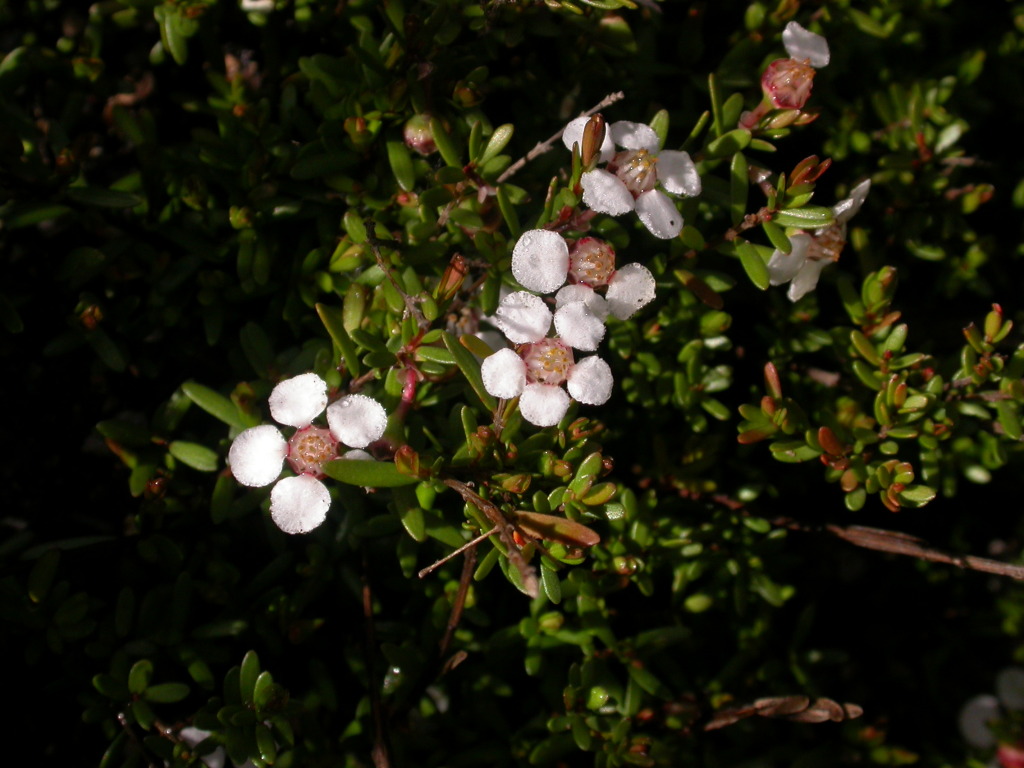Euryomyrtus
Low, usually spreading shrubs or subshrubs, usually glabrous. Leaves opposire, appressed to spreading, shortly petiolate. Inflorescence axillary, usually single-flowered. Flowers white to deep pink, pedicellate (in Victoria) or subsessile; bracteoles 2, sub-opposite to alternate, persistent; calyx 5-lobed, persistent in fruit; petals 5, free, orbicular; stamens 3–29, in 1 row, shorter than petals; anthers gland-tipped, opening by slits; ovary half-inferior, 3(–4)-celled. Fruit a loculicidal capsule, base and sides fused to the hypanthium, dehiscing by terminal radial slits; seeds numerous, seeds reniform, arillate.
Endemic genus of 6 species in eastern and southern Australia.
Generally distinguished from Baeckea by the 3-celled ovary, and reniform seeds. However, this combination of characters is also present in B. ericaea and B. crassifolia. Euryomyrtus species are distinguished from these two species by the distinctly pedunculate flowers, subopposite or alternate bracteoles, and arillate seeds with a small hilum (less than one-third the length of the seed).
 Spinning
Spinning

